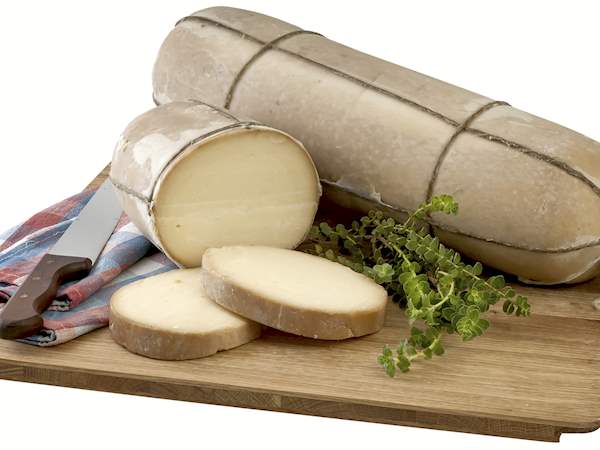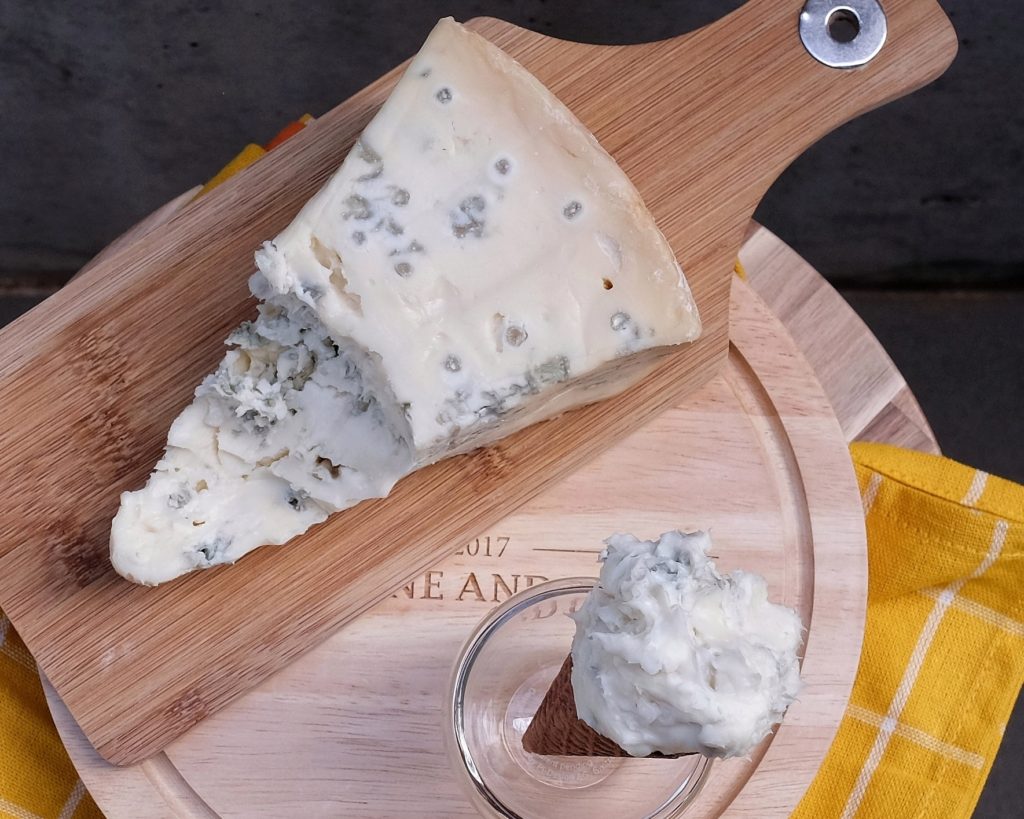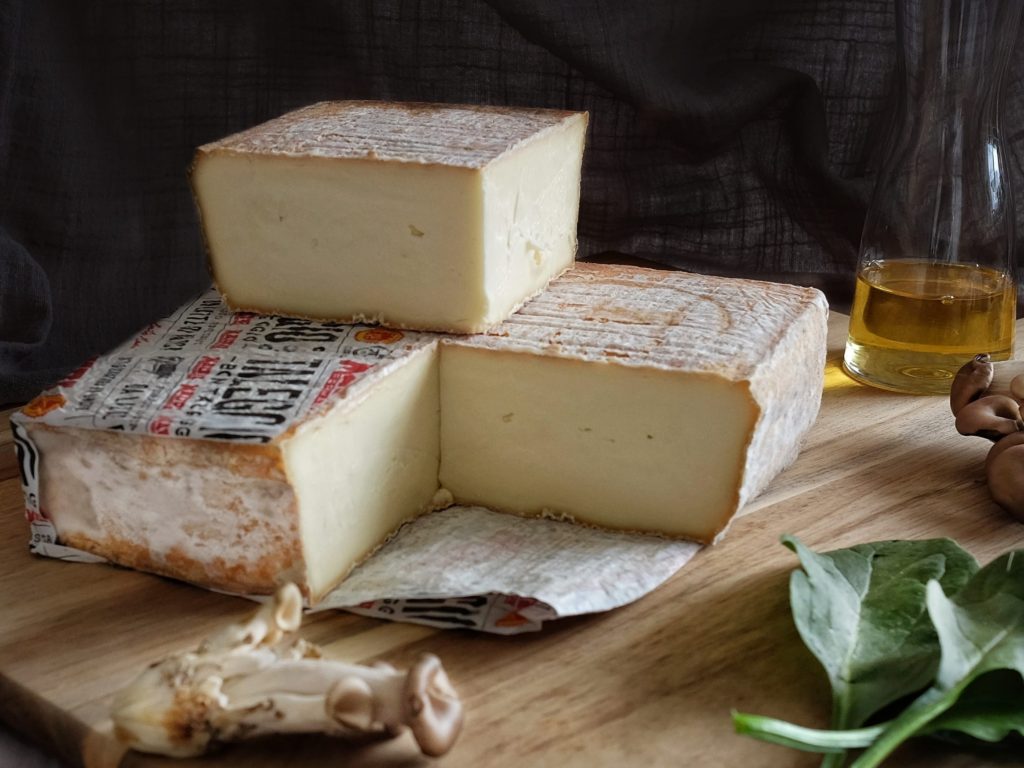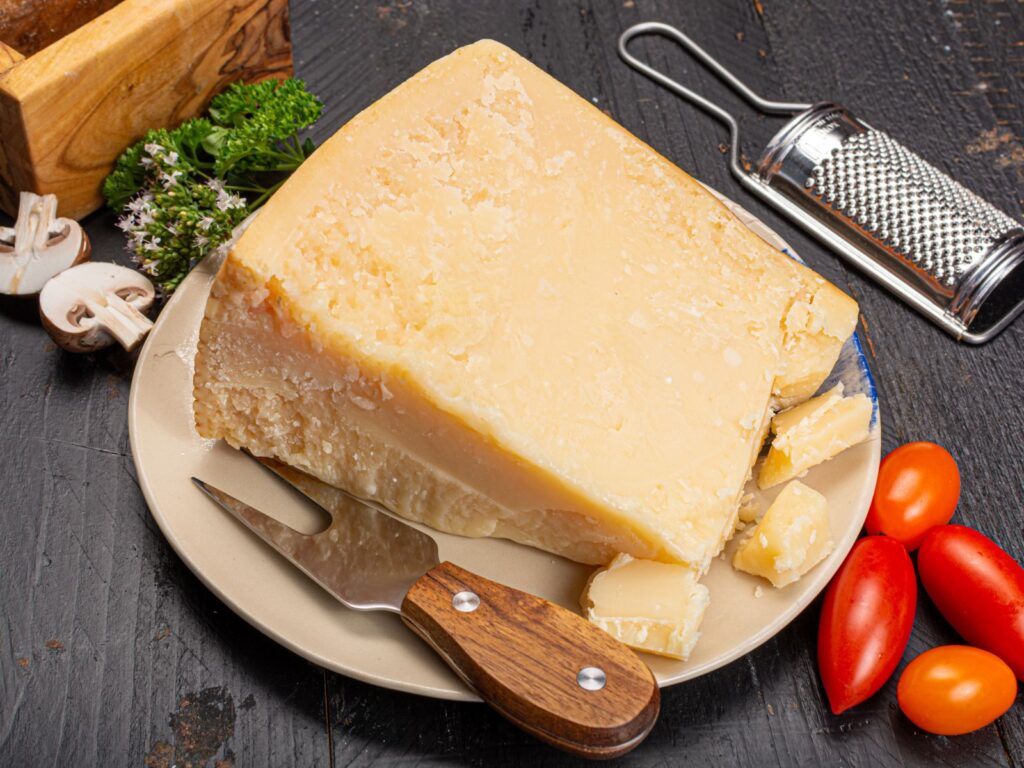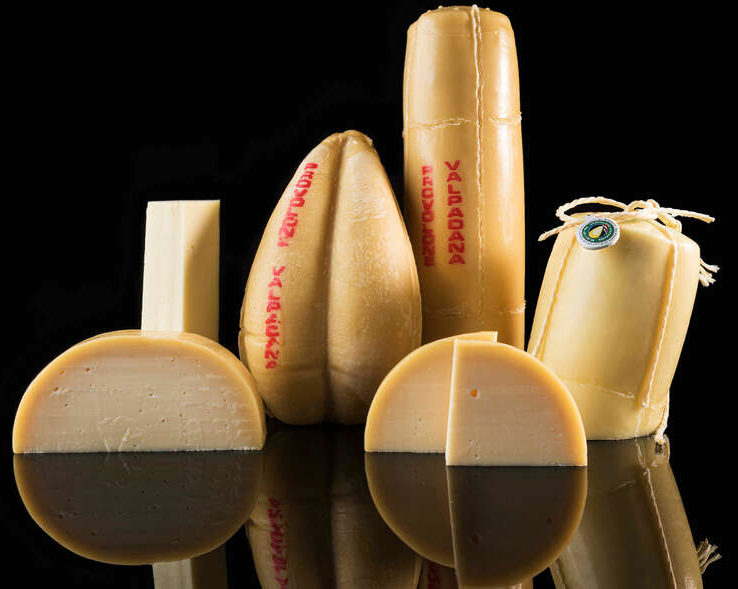
What is Provolone?
Provolone Valpadana is an aged pasta filata (stretched curd) that originates from the Po Valley in northern Italy.
While Provolone is made in other parts of Italy, Provolone Valpadana is protected by a DOP stamp. As a result, cheesemakers can only make this cheese in this region.
The history of Provolone Valpadana
The origins of this Italian cheese date back to Cistercian monks in the territory between the rivers Lambro and Adda. Since they started reclaiming surface waters for agriculture, they created the perfect conditions for agriculture. And, consequently, dairy cattle rearing and cheesemaking.
Presently, the production area for Provolone Valpadano includes Lombardia, Veneto, Emilia-Romagna and Trento.
What does Provolone mean?
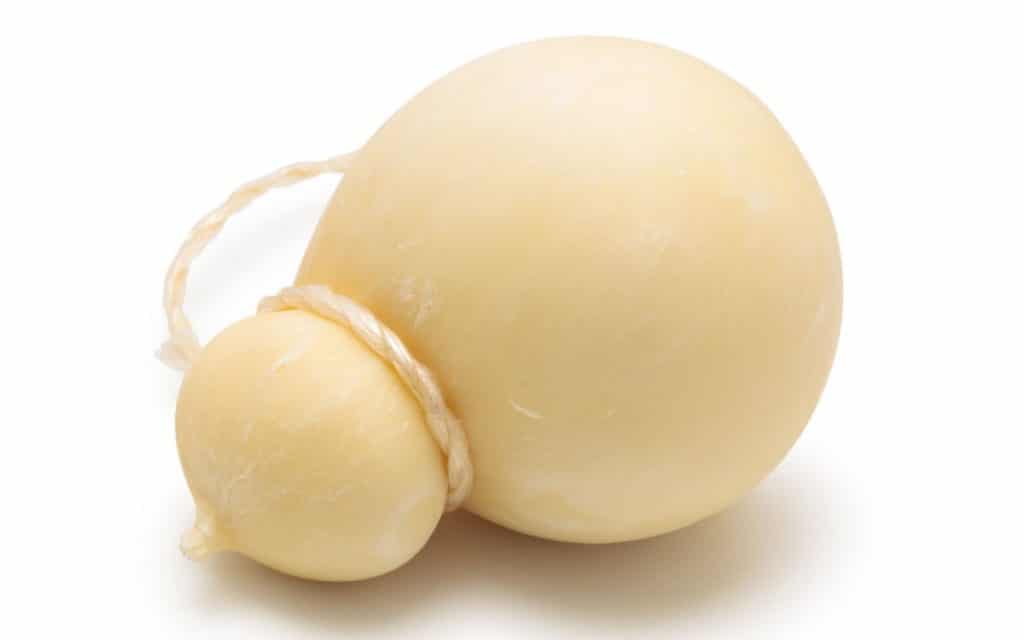
Before delving into the meaning of “Provolone”, let’s introduce another traditional Italian cheese, Provola.
Provola is a pear-shaped soft, pasta filata cheese made with either buffalo or cow’s milk. As a matter of fact, Provolone means a large-sized Provola. Due to the similarities in production and appearance, the name fits perfectly.
Next, we will guide you through how the Italians make the different types of Provolone.
How is Provolone Valpadana made?
While there are many variants of Provolone, they fall mainly under two categories.
Firstly, the young and mild cheese is called Provolone Dolce (sweet). And, there is a more robust version called Provolone Piccante (spicy).
Comparatively, cheesemakers can age the latter for much longer until it is crumbly. This specific type is called Provolone Piccante Stagionato.
Provolone Dolce
At first, the cheesemaker collects milk from the polder and adds natural whey and rennet to form the curd. In fact, they use all local ingredients to create the unique characteristic flavour profile.
Afterwards, they cut the curd and drain the excess whey. Next, the skilled artisans weave and shape the cheese into a round shape.
Finally, it is brined and cooled before being hung in string to rest and mature.
Provolone Piccante
In fact, Provolone Piccante’s production starts in the same way as the sweeter version. In addition to the usual ingredients, the cheesemaker also adds goat rennet to the milk before forming the curd.
As a result, this type of Provolone develops a more pronounced and spicy flavour.
How is Provolone matured?
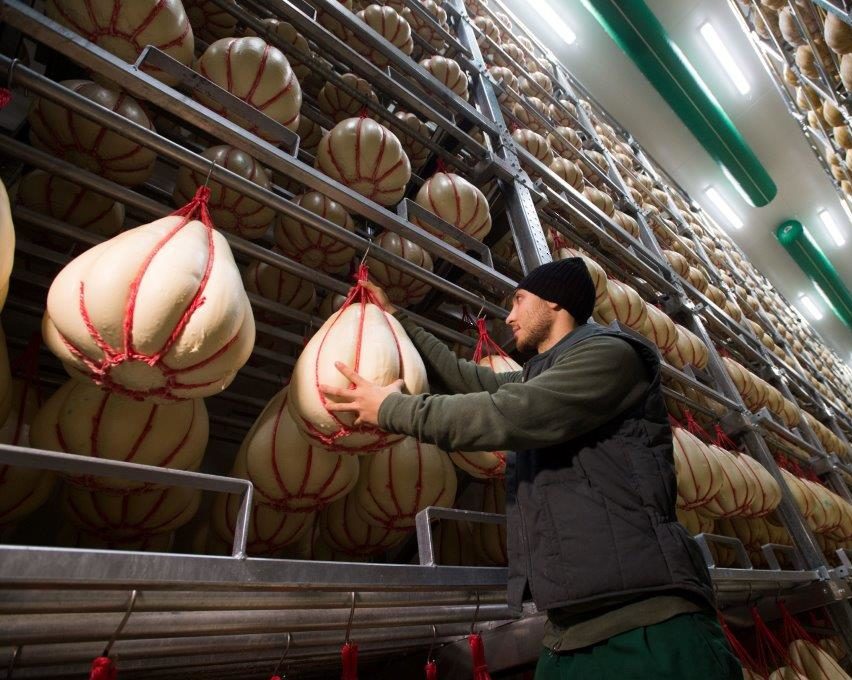
Subsequently, an affineur matures the cheese in warehouses with controlled humidity and temperature conditions. During this time, they hang the cheese by the string.
Overall, this process lasts for a minimum of 10 days for the mild Provolone Dolce. However, maturation can extend to more than 12 months for Provolone Piccante Stagionato.
The many shapes of Provolone

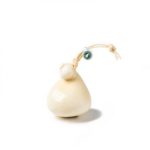
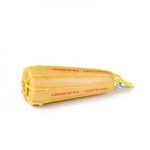
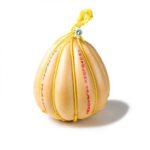
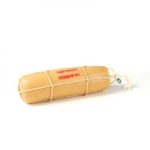
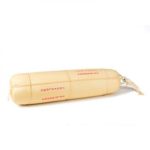
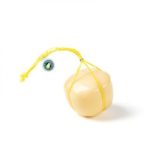
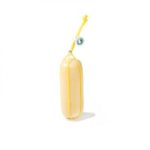
The most common shapes of Provolone are salami (Salamino), melon/pear (Mandarone) and flask shaped (Fiaschetta). Swipe across the gallery above to see each one of those, as well as some more modern shapes.
As a general rule, artisans make Provolone Dolce in the smaller shapes. On the other hand, they typically make Provolone Piccante in the larger formats because they mature better.
Which shape of Provolone should I buy?
Indeed, choosing the correct shape is very important. For example, the half-moon (mezzaluna) shape is most commonly used in cooking or cubing.
Furthermore, the Pancettone or Gigantino are more suited to being cut into triangles and served fresh on a cheese board.
What does Provolone taste like?
Unsurprisingly, the youngest version of Provolone has the mildest flavour profile. On the palate, you will detect hints of nuts and salt, with a smooth texture.
On the other hand, Provolone Piccante tends to have a more robust, spicy quality as it matures.
And finally, Provolone Piccante Stagionato has a crumbly texture with a complex, earthy aroma. Moreover, it has a much sharper, savoury flavour than the two younger versions.
How to serve Provolone
Provolone Dolce
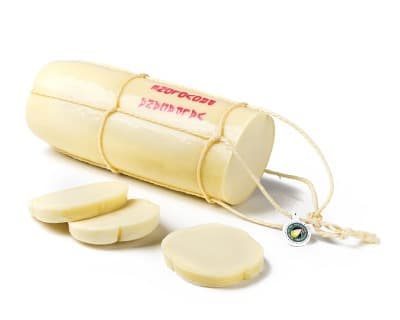
Due to its mild flavour, Provolone Dolce is best used in cooking. As a matter of fact, you can enjoy this versatile cheese fresh in a Philly Hoagie or melted in a Grilled Cheese sandwich.
Provolone Piccante
In contrast, the more robust Provolone Piccante excels on a cheese board. Without a doubt, it pairs exceptionally well with full-bodied wines such as Aglianico, Gattinara and Barbera d’Asti.
Provolone Piccante Stagionato
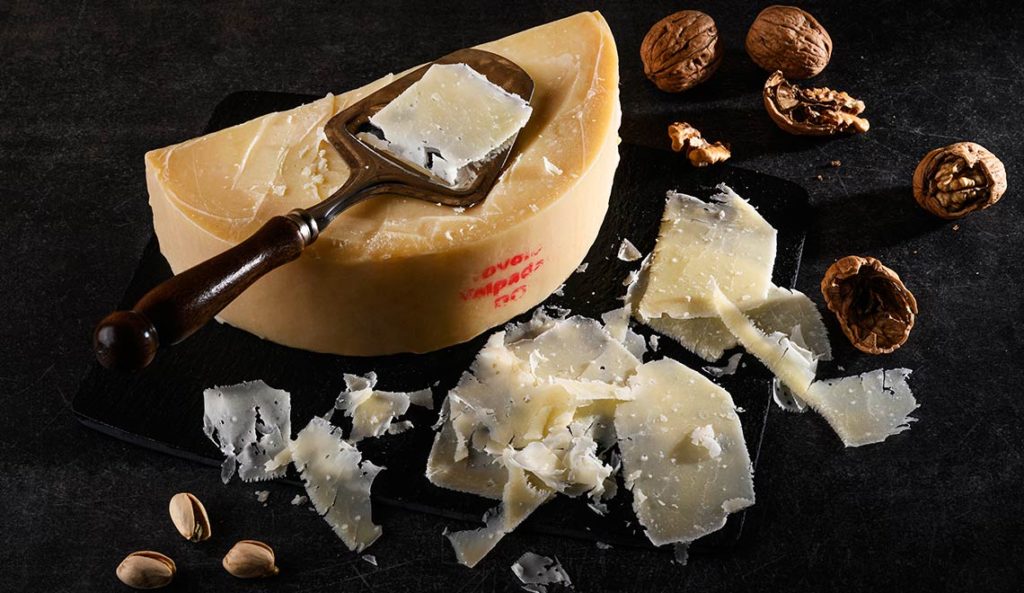
Finally, this aged version is such a complex cheese that it is best enjoyed on its own. If you want to pair it, honey and jams are great options. Also, you can try grating it on top of your pasta dishes.
As for wine, enjoy with a full-bodied red wine such as Brunello di Montalcino, Amarone or Barolo.
Substitutes for Provolone
Can’t get your hands on Provolone Valpadana? Fontina and Mozzarella might be suitable substitutes.
Fontina is complex and nutty in taste and offers a similar texture to Provolone Piccante. However, if you are after a milder cheese, Mozzarella is a great option. Moreover, you can serve it fresh in a salad. melted in a sandwich or on top of pizza.
Thank you for reading
Thank you for reading this post about yet another amazing artisanal cheese. Have you tried this cheese before? Drop us a comment below with your thoughts.
If you enjoy learning about new cheeses, you can subscribe to our newsletter below. You will hear from us about once a week as we share new cheese profiles with you.
Finally, keep scrolling to find some more cheeses and recipes that have been recommended for you. Keep it cheesy!
